On Wednesday, May 16, protests in the city of Kazerun in Fars province turned bloody when police and security forces began firing shots into the crowd. The demonstrations followed on from similar violent protests in April, as residents rallied to voice their anger at plans to split the county, also called Kazerun, into two. People have sent eyewitness accounts documenting the violence, including video footage, to IranWire and other media outside Iran. Some Iranian media have also reported on the riots.
In addition, people have posted videos on social media claiming to document the unrest in Kazerun, which is west of Shiraz. Unconfirmed reports say that protesters attacked a police station and surrounded a number of government buildings. According to these reports, several people were injured and at least three of the protesters were killed.
[WARNING: THIS VIDEO INCLUDES SCENES OF VIOLENCE]
Protesters shouted out various slogans during the rallies — “State Radio and Television Should be Ashamed,” “The Government Supports Gazans, But Betrays Kazerun,” and “Our Enemy is Here, not in the US” among them.
Since summer 2017, people from Kazerun have expressed their opposition to the planned breakup in a variety of ways. The plan is to create a new county, to be named Kuhchenar, a hybrid of the names of two other towns, Kuhmareh Nowdan and Chenar Shahijan. The idea to goes back at least 20 years, and it does have some support among local citizens, in particular the people of Chenar Shahijan, a town located next to an important highway that connects three Iranian provinces — Fars, Khuzestan and Kohgiluyeh and Boyer-Ahmad. An undeveloped and poor district, its residents accuse Kazerun city officials of discrimination and have called for it to break away from the county.
The Most Despised Figure
The main official supporting the plans to split the county is Hossein Rezazadeh, Kazerun’s representative to the parliament. The division was one of his key campaign promises, and he won the election by securing the votes of those who support the plan. On August 8, 2017 Rezazadeh, who is arguably the most despised political figure in Kazerun, confirmed the formation of the new county in a short message delivered via Telegram. This sparked protests against him, and led the people of Kazerun to write to Ali Larijani, speaker of the parliament, asking him to become their “acting representative.” They were so angry with Rezazadeh that they declared he did not represent them in the parliament.
At the same time, residents of the local councils of 11 villages in the rural district of Dasht-e Barm wrote to Kazerun’s governor and announced their opposition to being part of the new Kuhchenar county. This rural district is important because of its historical sites and natural resources, including a forest area. In fact, for a long time, the people of Kazerun had hoped their county would be designated as a “special governorate.” In Iran, governors of such counties are given powers usually reserved for the governor of the state. Some Kazerun citizens even dreamed that their county would become the capital of a new “Western Fars” province, but now, along with plans to break up the county, their hopes are being dashed.
Serious concerns about the new county followed the summer 2017 announcements that it would be implemented, and the first protest rally took place on July 30, 2017. Shopkeepers closed up their businesses and gathered outside the offices of Mohammad Khorsand, the city’s Friday Prayers Leader. Khorsand is a member of the conservative Islamic Coalition Party and is influential among the more moderate layer of conservative principlist politicians. He declared his opposition to the creation of the new county, but he was unable to stop the process.
Between then and March 2018, opponents of the new county gathered signatures for several petitions, circulating them widely, and sent them to Kazerun’s governor, Ebrahim Ostovar Meymandi; they also attended several meetings at his office. But after their complaints did not produce any success and plans went ahead for the new county, a second round of protests began in April.
To placate protesters, Meymandi told the Islamic Republic News Agency (IRNA) that if the plan did go through, he would make sure some historical monuments and the Seyed Hossein religious shrine would remain within Kazerun County. His statement was confirmed at a press conference given by Hadi Pazhouhesh Jahromi, the Fars governor’s deputy for political, social and security affairs.
Jahromi added that at the moment Kazerun did not qualify for designation as a “special governorate,” but because of the historical significance of the city of Kazerun, the matter was being considered. There is a range of pre-conditions a city must meet to become special governorate. Many of the conditions refer to the size of the population, the size of the area, and so on. If a new county is created, Kazerun would score lower than required in this regard, but it had appeared that the officials of the interior ministry were ready to make concessions to placate protesters.
“Our Enemy Is Right Here”
However, protesters were not convinced, and said they lacked confidence in the promises made. Despite pleas from provincial officials and the Friday Prayers Leader, and in apparent defiance of the increased police presence on the streets, on Friday April 20, they unexpectedly occupied the site for the city's Friday Prayers. They chanted in protest against Friday Prayers leader Mohammad Khorsand and called for his resignation. They also chanted political slogans against the government, the Islamic Republic and their representative to the parliament.
The protests caught the attention of the media and social networking sites because some of the protesters' chants were very similar to those used in the demonstrations that spread across the country in early January 2018 — suggesting a deeper, more widespread malaise. Some people shouted: “Our enemy is right here; liars say it is America,” but there were other, more shocking slogans too, including “Be afraid when we get guns” and “We will kill the traitors.” This readiness for violent confrontation is new, and had not been a feature of earlier rallies. But this violence is a feature of the latest protests too.
Bahram Parsaeinejad, a member of the parliament from Fars province, said the protests in Kazerun were the “same protests we see in other parts of the society.” He said the majority of people going out on the streets were not doing so out of opposition to administrative boundaries — they wanted to be heard on more wide-reaching issues. “People are protesting in response to their financial and employment situation,” he said.
The Elusive “Solution”
In a memo published on April 21, Parvaneh Salahshouri, a representative from Tehran, sounded the same note. “The responsible authorities, whether they accept it or not, are on one side and people are on the other side,” she wrote. “We can see proof of this in Isfahan and Kazerun and many other places. We must be aware that for years now people have been under pressure and these [protests] amount to acts of civil disobedience.”
On April 21, Eshagh Jahangiri, Rouhani’s First Vice President, demanded that a solution be found so that the Kazerun protests would come to an end. “You cannot have people come to the streets every day so that some people are able to exploit it and chant their own slogans,” he said, suggesting that people with less legitimate claims could hijack the demonstrations.
But the bloody protests in April showed a “solution” has yet to be found. And now the protests are back, and lives have been lost. A glance at the last 11 months suggests that the people of Kazerun have tried every peaceful tool at their disposal — from rallies, strikes, petitions and pursuing the matter with both the media and politicians — but, in their view, authorities have refused to listen.
visit the accountability section
In this section of Iran Wire, you can contact the officials and launch your campaign for various problems





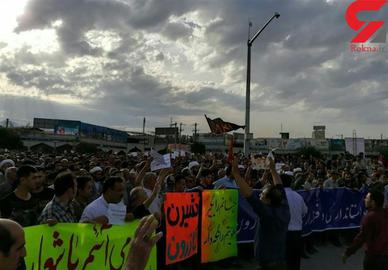
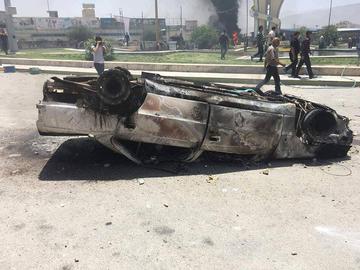
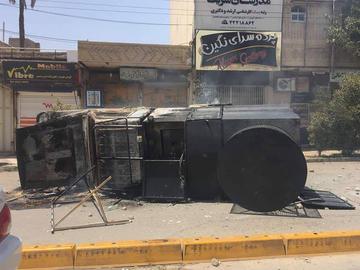
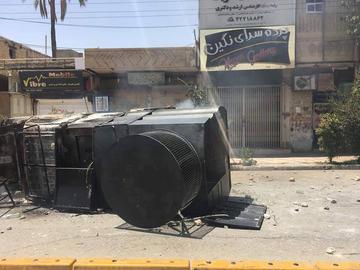
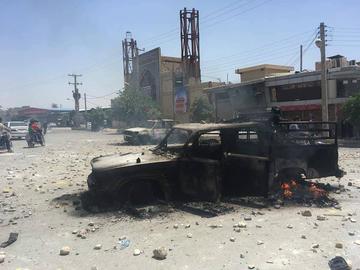
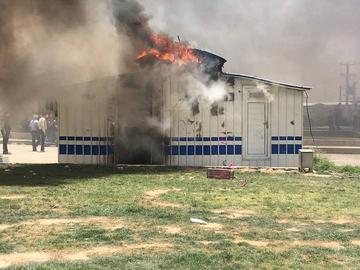
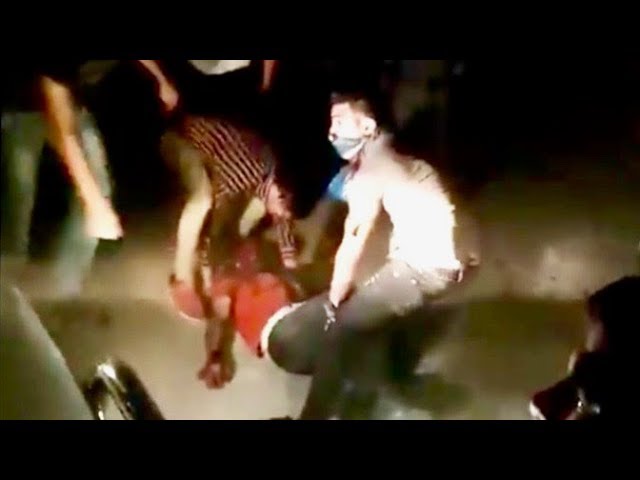




















comments